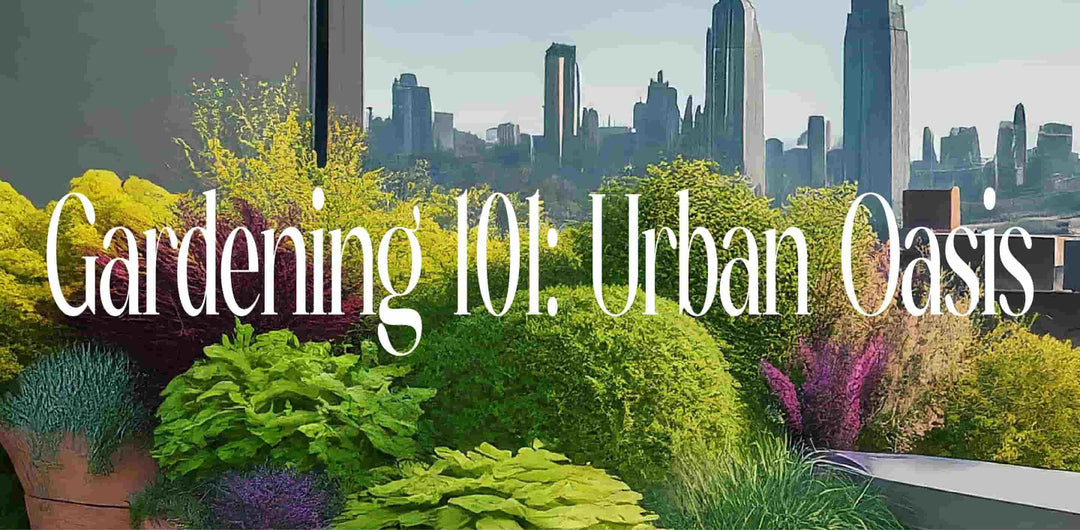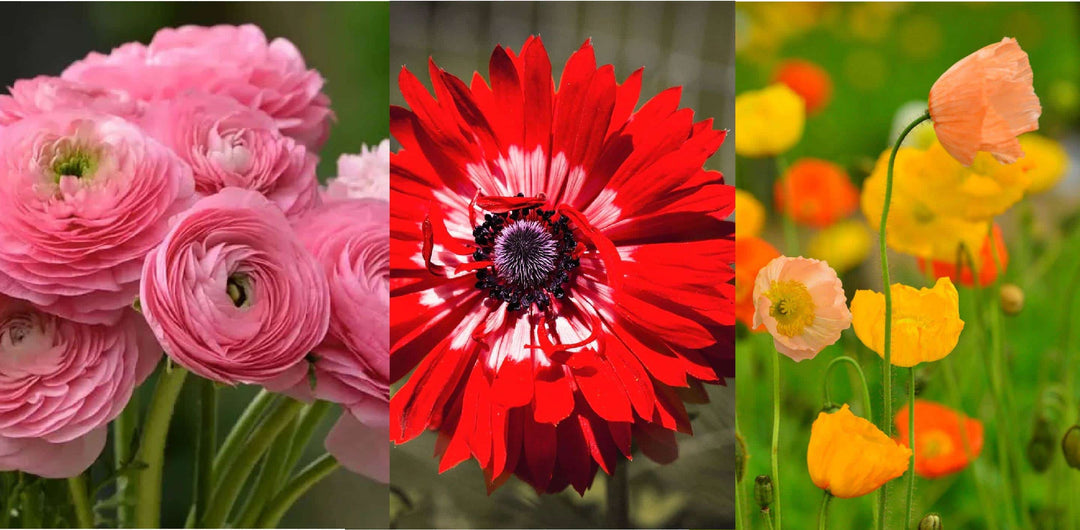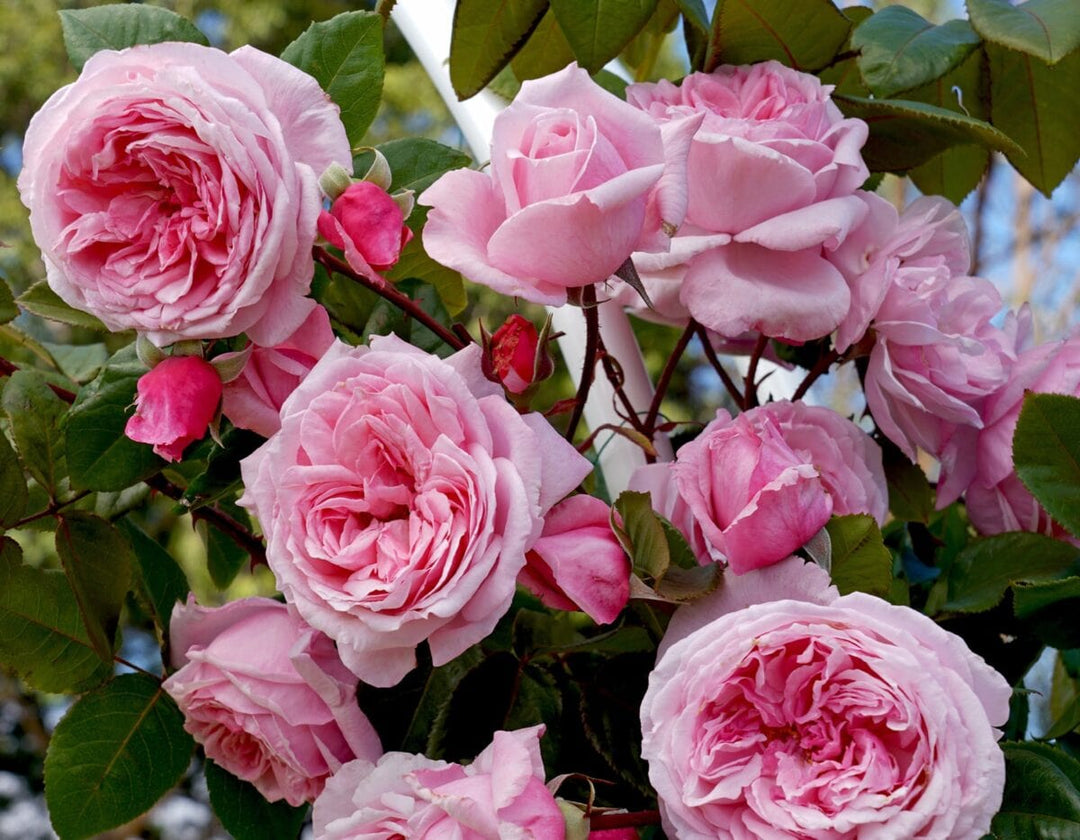How To Grow Cut Flowers
Growing flowers for cutting is the best way to get the most out of your blooms! Whether you're growing them for gifting, décor or fragrance, a constant supply of flowers is a beautiful gift from nature that will put a smile on anyone's face. In this blog, we're here to teach you everything you need to learn to grow your very own constant supply of cut flowers this year.
Step 1: Choosing Your Flowers
Choosing the best flowers for your cut garden isn't as easy as picking the prettiest flowers you can find. After all, it doesn't matter how lovely the flower is if all the petals fall off after it's cut. A cut garden with a constant supply of blooms requires planning to ensure each flower's needs are met and yours.
Long Stem
You will want to look for flowers with a long and robust stem for the best cut flowers. A long stem will allow your flower to absorb a healthy water supply, providing you with healthy, long-lasting blooms!
Bloom Times
In Canada, it's common for most provinces to get up to 6 months of flower blooms. However, in 6 months, the flowers you choose to plant are likely to have different bloom times. When planning your cut-flower garden, be sure to check the package for bloom times and the duration of blooms. We recommend researching your favourite flowers to ensure you meet their growing requirements first. Then, using a pen, pencil, paper, computer, write out the following chart to help plan your bloom times. Here is an example of a successful cut-garden that will produce a combination of three or more blooms, all season long.
| FLOWER | SOW | MAY | JUN | JUL | AUG | SEPT | OCT |
| Bachelor Button | Direct, after last frost | X | X | X | X | X | X |
| Sweet William | Direct, after last frost | X | X | X | |||
| Poppy |
Direct, just before last frost |
X | X | ||||
| Foxglove | Direct, after last frost | X | X | X | X | ||
| Dahlia | Direct, April/May in warmer soil | X | X | X | X | ||
| Sunflower | Direct, April/May in warmer soil | X | X | X | X | ||
| Zinnia | Direct, after last frost | X | X | X | X |
Re-blooming
Another great way to get continuous blooms is to plant flowers that re-bloom. Re-blooming flowers produce more flowers even after you've harvested their blooms. It is essential to know that re-blooming flowers may take a while to produce more blooms, so be sure to time your flower harvest according to each re-blooming flower.
Step 2: Planning & Planting

Now that you have successfully planned a cut-garden that produces continuous blooms all season long, it's time to plant them! For happy and healthy cut flowers, follow the below instructions for the best planting practices.
Tip: Consider planting contrasting colours together for a pop of colour!
Care instructions
Whether planting from seed or bulb, each flower you choose should come with care instructions. It's essential to pay attention to the sun, water, spacing, planting depth and soil requirements for each flower you're planting. We recommend keeping your seed/bulb package on hand for reference, as this information can be easily forgotten (plus, it's also an excellent way to remember what you've planted!).
Soil & Fertilizer
If you are planting your flowers from seed or bulb, the soil requirements may vary. Seed Starter Mix will provide the best nutrients for seeds to grow healthy and strong. Once the seeds are ready to be transferred to the garden or pot, it is best to use well-draining soil like sandy loam, which is also best for bulbs. For added nutrition, mix compost in with your soil.
Tip: Add a layer of mulch to the top of your garden bed to reduce the chances of weeds and retain moisture.
Spacing
When planting your flowers, it's important not to space them too close together, as this will create stress for your flowers, leading to disease and unwanted pests. If the flower packaging does not indicate the space needed for your flowers to grow, space your flowers according to size. As a general rule, space small flowers 6-12 inches apart, space medium size flowers 12-18 inches apart and space large/tall flowers 18-36 inches apart.
Tip: Mix your annuals and perennials for constant blooming, avoiding empty spaces.
Step 3: Cutting & Cut Flowers

There are two areas to consider when it comes to cutting your new blooms. The first is to cut your blooms safely to maintain the integrity of your plant. The second is to get as much life out of your flowers as possible once they've been cut and placed in a vase.
Cutting Flowers
Taking a pair of pruners to your beautiful new blooms can be scary. But, with our help, you'll have nothing to worry about. Get a clean pair of pruners, 70-100% Isopropyl alcohol and a clean rag. Using your clean pruners, follow the steps below while using the alcohol and clean rag to wipe your pruners clean in between use. This will prevent the spread of disease.
1. Cut: After your flowers have retained moisture overnight and are firm to the touch in the morning. Cut a 45-degree angle, 1 inch from the bottom of the stem. This will provide a better water intake for your flowers and allow your flowers to stand on a point.
2. Water: Immediately place your freshly cut blooms in room temperature water or cold water (for bulbs). Placing your flowers in water immediately is important to prevent air absorption.
3. Feed: For longer-lasting blooms, flowers require nutrients to thrive. To make your flower food, try the following recipe.
Flower Preservative
Tip: Use a plastic pale to place your flowers in, as metal can affect pH levels.
Cut Flower Health

Now that we've created a beautiful arrangement of homegrown cut flowers, it's time to give them the best possible chance at survival by caring for them in their new habitat. Here are the best tips for keeping your cut flowers happy and healthy for as long as possible.
- Don't overcrowd. Overcrowding could lead to poor air quality, resulting in disease.
- Keep flowers away from sunlight and drafts. The best place for flowers is somewhere they can stay cool.
- Refresh water frequently, no less than every 2-3 days.
- Check for limpness re-cut as needed to increase water intake.
- Prune wilted blooms to prevent disease.
- Remove any debris from the water to keep it clean.
- Re-feed flowers each time the water is refreshed.
- Re-cut flower stems slightly at a 45-degree angle before placing them back into a freshwater vase. To prevent build-up dirty water and allow for proper water intake.
There you have it! With this handy guide, you'll be growing fresh-cut flowers in no time. The only thing left to do is decide on your favourite arrangements - the possibilities are endless!










